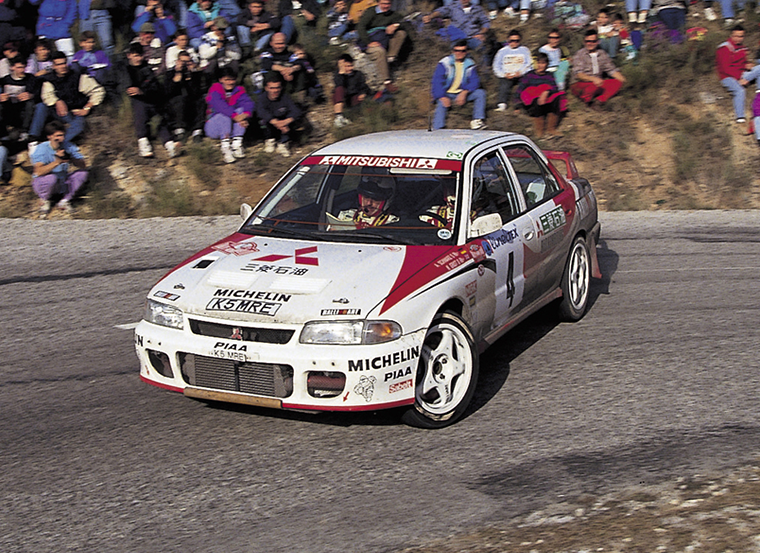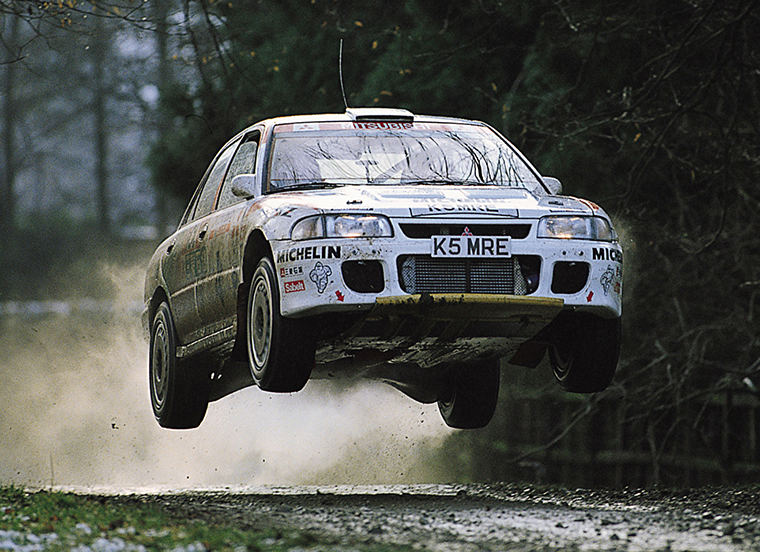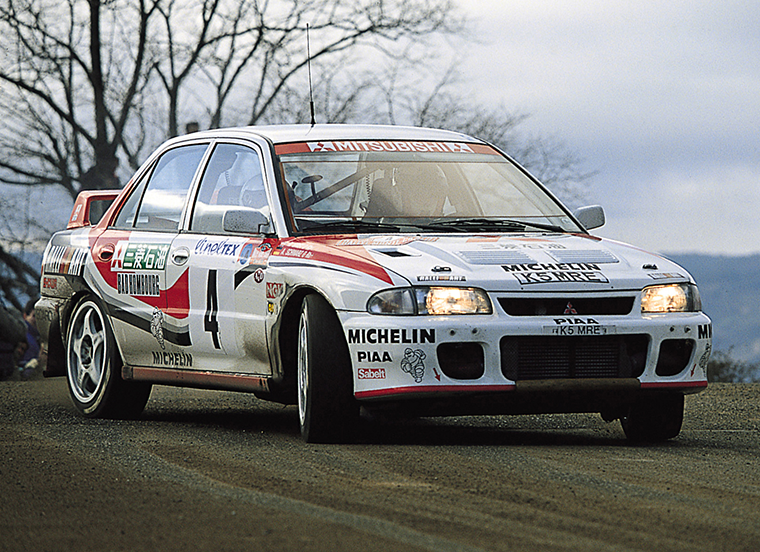WRC 1993
1993 World Rally Championship
In 1993, major changes were made to the regulations for Group A cars, which is the top category in World Rally Championship (WRC). The Fédération Internationale de l'Automobile (FIA) first reduced the lowest production volume required to obtain homologation from 5,000 units to 2,500. In terms of technology, the minimum weight of a 2.0-liter turbo car was increased from 1,100 to 1,200 kg, while the maximum outer diameter of the tires was reduced from 680 to 650 mm. The diameter of the air restrictor was also reduced from 40 to 38 mm. The fuel used was unified based on a specified type, and simultaneously the octane rating was lowered from 102 to about 97.
| Rd. | name | Country |
|---|---|---|
| 1 | Monte Carlo Rally | Europe, France, Africa and Monaco |
| 2 | Swedish Rally | Sweden |
| 3 | Rallye de Portugal | Portugall |
| 4 | Safari Rally | Kenya |
| 5 | Tour de Corse | France |
| 6 | Acropolis Rally | Greece |
| 7 | Rally Argentina | Argentina |
| 8 | Rally New Zealand | New Zealand |
| 9 | 1000 Lakes Rally | Finland |
| 10 | Rally Australia | Australia |
| 11 | Rallye Sanremo | Italy |
| 12 | Rally Catalunya | Spain |
| 13 | RAC Rally | United Kingdom |
 LANCER EVOLUTION, which inherited the name of a famous car that conquered the Safari Rally and Southern Cross Rally in the 1970s, finally made its debut at the Monte Carlo Rally as new regulations that have a major impact on rally car development came into effect on January 1st.
LANCER EVOLUTION, which inherited the name of a famous car that conquered the Safari Rally and Southern Cross Rally in the 1970s, finally made its debut at the Monte Carlo Rally as new regulations that have a major impact on rally car development came into effect on January 1st.

In addition to Kenneth Eriksson (Sweden), the MITSUBISHI MOTORS team newly appointed Armin Schwarz (Germany). In Monte Carlo, the two LANCER EVOLUTIONs raced to the end despite numerous problems, with Eriksson ending up fourth and Schwarz, who set two second fastest stage times, finishing sixth.
After that, MITSUBISHI MOTORS team’s Ericsson achieved the first fastest time for the LANCER EVOLUTION at the Portugal Rally, while Schwarz finished third in the Acropolis Rally in Greece.
Eriksson finished fifth in the 1000 Lakes Rally (now known as Rally Finland).
At that rally, the young Tommi Mäkinen (Finland), who will later win four titles with the MITSUBISHI MOTORS team, visited the team's service facility. The general manager of the team, Iwao Kimata, promised to give him “a chance to drive a Works Car the following year."
After that, MITSUBISHI MOTORS team’s Ericsson achieved the first fastest time for the LANCER EVOLUTION at the Portugal Rally, while Schwarz finished third in the Acropolis Rally in Greece.
Eriksson finished fifth in the 1000 Lakes Rally (now known as Rally Finland).
At that rally, the young Tommi Mäkinen (Finland), who will later win four titles with the MITSUBISHI MOTORS team, visited the team's service facility. The general manager of the team, Iwao Kimata, promised to give him “a chance to drive a Works Car the following year."
 In the middle of the 1993 season, the MITSUBISHI MOTORS team overhauled the multilink-type rear suspension, front and rear stabilizers, and 4WD system. As a result, LANCER EVOLUTION's handling improved significantly, and, in the final RAC rally, Schwarz achieved a total of five fastest times and led the rally in the early stages. He finished 8th after going off the road, but Eriksson also reached a total of five fastest times and finished second after fighting for the lead. If not for a three-minute delay due to a flat tire, the team could have won the rally. However, they finished the season with a great achievement.
In the middle of the 1993 season, the MITSUBISHI MOTORS team overhauled the multilink-type rear suspension, front and rear stabilizers, and 4WD system. As a result, LANCER EVOLUTION's handling improved significantly, and, in the final RAC rally, Schwarz achieved a total of five fastest times and led the rally in the early stages. He finished 8th after going off the road, but Eriksson also reached a total of five fastest times and finished second after fighting for the lead. If not for a three-minute delay due to a flat tire, the team could have won the rally. However, they finished the season with a great achievement.The Group N LANCER EVOLUTION also made its debut that same year. Its first victory was achieved at the New Zealand Rally by Yoshio Fujimoto, who was selected as Toyota's works driver the following year.

Result
| Rd. | 1 | 2 | 3 | 4 | 5 | 6 | 7 | 8 | 9 | 10 | 11 | 12 | 13 |
|---|---|---|---|---|---|---|---|---|---|---|---|---|---|
| Armin Schwarz | 6th | R | 3rd | 9th | 8th | ||||||||
| Nicky Grist | |||||||||||||
| Kenneth Eriksson | 4th | 5th | R | 5th | 2nd | ||||||||
| Staffan Parmander | |||||||||||||
| Kenjiro Shinozuka | R | ||||||||||||
| Pentti Kuukkala |
| Driver | Co-driver | R - Retired | D - Disqualified |
| Rd. | 1 | 2 | 3 | 4 |
|---|---|---|---|---|
| Armin Schwarz | 6th | R | ||
| Nicky Grist | ||||
| Kenneth Eriksson | 4th | 5th | ||
| Staffan Parmander | ||||
| Kenjiro Shinozuka | R | |||
| Pentti Kuukkala |
| 5 | 6 | 7 | 8 | 9 | 10 | 11 |
|---|---|---|---|---|---|---|
| 3rd | 9th | |||||
| R | 5th | |||||
| 12 | 13 |
|---|---|
| 8th | |
| 2nd | |
Driver
Co-driver
R - Retired
D - Disqualified
Spec
LANCER Evolution
| Overall length | 4,310 mm |
|---|---|
| Overall width | 1,695 mm |
| Engine model | 4G63 4-cylinder DOHC turbo |
| Displacement | 1,997 cc |
| Maximum output | 295 ps |
| Maximum torque | 45.9 kg-m |
